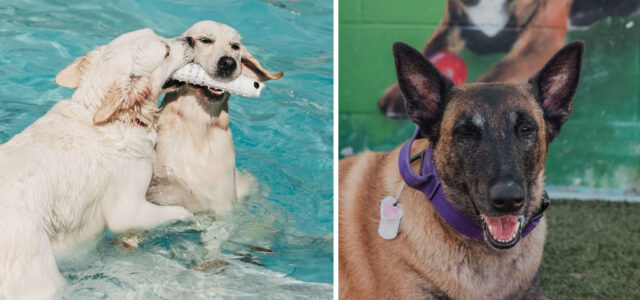The Fourth of July is a holiday for family and friends to enjoy the sunshine, pools, barbecues, and fireworks. Although the day is full of fun activities and delicious food, many of the festivities are not always safe for our furry, four-legged family members. Here are safety tips that will help your pet have a safe and sound Independence Day.
Food Safety
With the hustle and bustle of the day, it can be easy to make the mistake of leaving a plate unattended or dropping food that is unsafe for canine consumption. Indulging in barbeque is a classic Fourth of July tradition, but fatty and salty meats can cause gastrointestinal upset or even pancreatitis in some dogs. Meats to avoid include ham, ribs, bacon, sausage, pepperoni, fatty hamburger, and raw salmon. A better option for dogs is cooked, lean, poultry or fish.
Fruits make for healthy and tasty treats for dogs, however, several fruits can be dangerous and difficult to digest. Always keep dogs away from grapes (including raisins!), avocado, large amounts of cherries, and any fruit with a pit. An alternative to these fruits are berries, apples, mangoes, bananas and apricots. Always make sure the fruit is in small enough pieces to ensure the dog won’t choke.
Alcohol
Another important factor to consider throughout the day is that alcoholic beverages have the potential to poison pets, so never leave drinks unattended or within reach of pets. If dogs ingest alcohol, they can quickly become very intoxicated and weak.
Fireworks
When the day draws to a close and fireworks are set to begin, it is important to remember that pets do not associate the loud noises and flashing lights with celebration in the same way that people do. More pets end up in shelters on the Fourth of July than any other day of the year because the booming sounds associated with fireworks can cause anxiety and an instinctual reaction to escape. To avoid this, consider staying home to reassure pets, or if going out, make sure your dog is in a secure place where they can’t escape or hurt themselves. In the event that your dog gets scared and is able to escape, microchip identification will be helpful in locating and identifying your dog.





